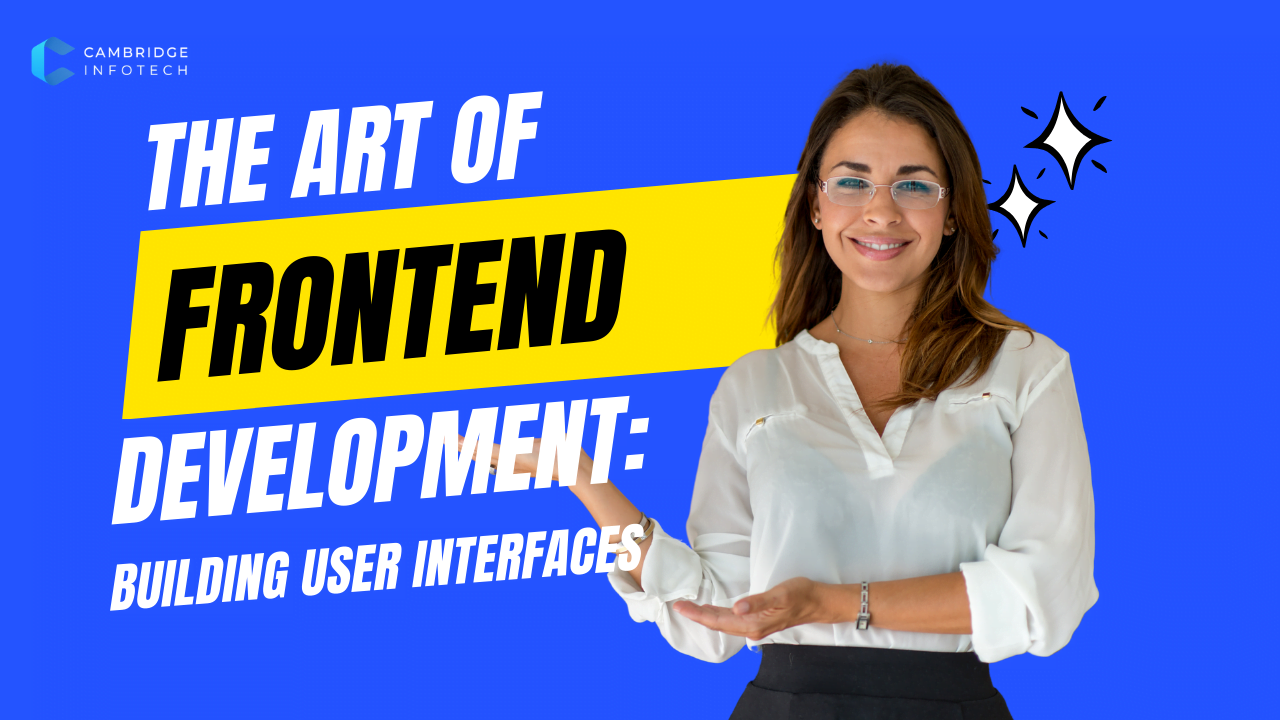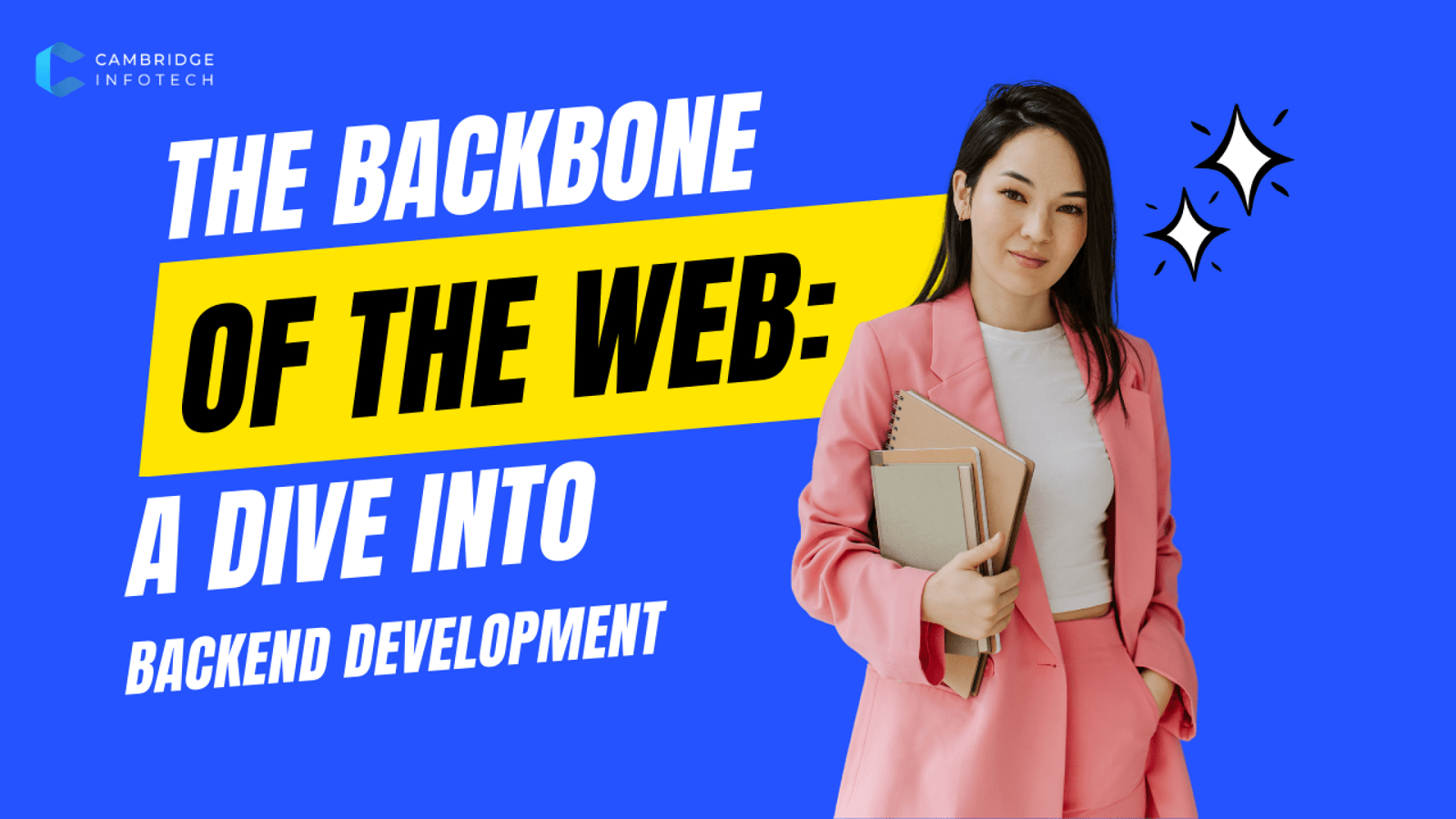Currently Empty: ₹0.00

Crafting Elegant User Interfaces: The Mastery of Frontend Web Development
Frontend development is a delightful blend of art and science, shaping the digital canvases we interact with daily. It is a discipline where creativity meets functionality, creating user interfaces that are not only visually appealing but also user-friendly and accessible. This guide dives into the intricacies of frontend development, shedding light on the techniques, technologies, and principles that make digital experiences come alive.
Introduction
Welcome to the fascinating world of frontend development! If you’ve ever marveled at the beauty of a website or appreciated the intuitive design of a mobile app, you’ve experienced the magic that frontend developers conjure. Far from being just about “making things look pretty,” frontend development is crucial for the digital age, making information accessible, engaging, and enjoyable.
In this journey through the landscape of frontend development, we’ll explore how this field has evolved and what it encompasses today. From the foundational technologies to the latest trends, you’ll gain a comprehensive understanding of how to craft beautiful, functional user interfaces.
The Basics of Frontend Development
At its heart, frontend development is all about building the parts of a website or app that users interact with. Let’s delve into the core technologies and principles:
- Understanding HTML, CSS, and JavaScript: These three technologies are the bread and butter of the web.
- HTML provides the structure, letting us define elements like headings, paragraphs, and images.
- CSS adds style to these elements, allowing us to play with colors, fonts, and layouts.
- JavaScript introduces interactivity, enabling users to engage with the content in dynamic ways.
- Understanding HTML, CSS, and JavaScript: These three technologies are the bread and butter of the web.
- Responsive Design Principles: It’s vital that websites look and work flawlessly across all devices.
- Using Flexbox and Grid systems helps in creating layouts that adapt to screen sizes.
- Media queries allow us to apply CSS rules based on device features, like width.
- A Mobile-first approach starts with designing for the smallest screens, ensuring a seamless experience everywhere.
- Responsive Design Principles: It’s vital that websites look and work flawlessly across all devices.
- Web Accessibility Standards: Accessibility is about making the web usable for everyone, including people with disabilities.
- Implementing ARIA roles and landmarks helps screen readers interpret web content.
- Ensuring proper keyboard navigation and sufficient color contrast makes the web more inclusive.
- Web Accessibility Standards: Accessibility is about making the web usable for everyone, including people with disabilities.
Tools of the Trade
To create outstanding user interfaces, developers rely on various tools and technologies:
- Integrated Development Environments (IDEs) and Code Editors: These are where the coding magic happens.
- Popular IDEs like Visual Studio Code combine editing, debugging, and other features to streamline the development process.
- Choosing the right tool largely depends on personal preference and project requirements.
- Integrated Development Environments (IDEs) and Code Editors: These are where the coding magic happens.
- Version Control Systems: Keeping track of code changes and collaborating with others is essential.
- Git, along with platforms like GitHub, allows for efficient version control and teamwork.
- Version Control Systems: Keeping track of code changes and collaborating with others is essential.
- Frontend Frameworks and Libraries: These help standardize and accelerate development.
- React, Angular, and Vue are leading frameworks that offer robust solutions for building dynamic interfaces.
- Libraries like jQuery, although less prevalent today, have played a significant role in simplifying JavaScript coding.
- Frontend Frameworks and Libraries: These help standardize and accelerate development.
Design Meets Code: The Art of Crafting Interfaces
The beauty of frontend development lies in its blend of design and technology. Here’s how to create interfaces that stand out:
- Principles of User Interface Design: Aim for designs that are not only beautiful but intuitive.
- Prioritize consistency and simplicity to enhance usability.
- Employ visual hierarchy to guide users’ eyes and actions on the page.
- Incorporate feedback and affordance so that users understand the results of their interactions
- Principles of User Interface Design: Aim for designs that are not only beautiful but intuitive.
- The User-Centered Design Process: Understand and anticipate the users’ needs.
- Conducting research and creating user personas are foundational steps.
- Wireframing and prototyping breathe life into ideas before full-scale development.
- Never underestimate the power of usability testing and iteration for refining interfaces.
- The User-Centered Design Process: Understand and anticipate the users’ needs.
- Performance and Optimization: A fast-loading, smooth-running website is a joy to use.
- Techniques for reducing load times include optimizing images and minimizing code.
- Leveraging browser caching and reducing HTTP requests can significantly improve performance.
- Performance and Optimization: A fast-loading, smooth-running website is a joy to use.
Beyond the Screen: Advanced and Emerging Frontend Technologies
As we look toward the future, several technologies are set to redefine what’s possible in frontend development:
- Progressive Web Apps (PWAs) blur the lines between web pages and apps, offering offline capabilities and home screen access.
- Web Assembly promises to unlock high-performance applications in the browser, far beyond what’s possible with JavaScript alone.
- Virtual Reality (VR) and Augmented Reality (AR) are opening new frontiers, allowing developers to create immersive experiences directly in the web browser.
Summary and Conclusion
Frontend development is an ever-evolving field, with new tools, techniques, and best practices emerging all the time. By staying curious and continuously learning, anyone can master the art of building user interfaces that delight and engage. Whether you’re a veteran developer or just starting out, remember that the journey of learning is as rewarding as the destinations you’ll reach.
FAQs
Q. What is frontend development?
A: Frontend development involves creating the part of websites and applications that users interact with directly.
Q. How do I get started with frontend development?
A: Begin with the basics: HTML, CSS, and JavaScript. From there, explore responsive design principles, accessibility standards, and then dive into frameworks and libraries.
Q. What are the most popular frontend development tools and technologies?
A: Technologies like React, Angular, Vue, and tools such as Visual Studio Code, Git, and GitHub are among the most widely used.
Q. How important is responsive design in today’s web?
A: With a plethora of devices and screen sizes available, responsive design is crucial for ensuring a consistent and accessible user experience.
Q. Can I pursue a career in frontend development without a background in computer science?
A: Absolutely! Many successful frontend developers have come from diverse backgrounds and embarked on their tech journeys through self-study, boot camps, and practical experience.







